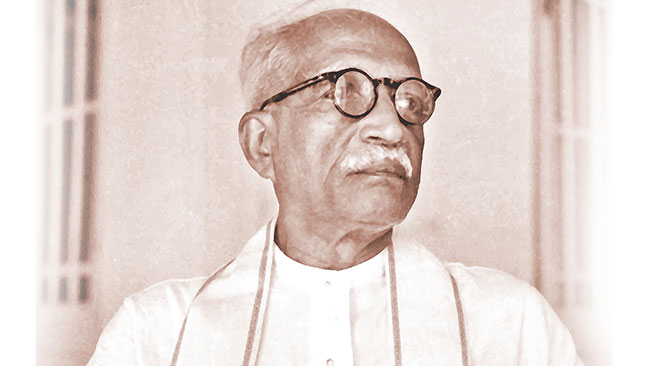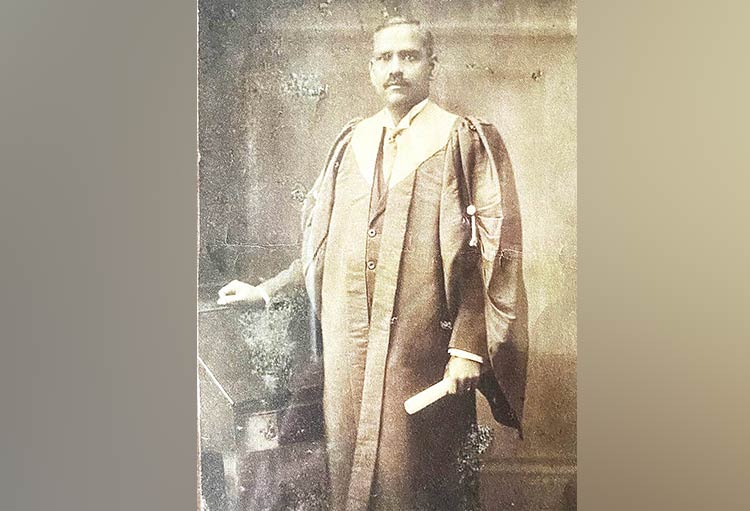Opinion
Free education: A mythical dimension

By I. P.C. MENDIS
We in Sri Lanka tend to very loosely refer always to the scheme of Free Education in the country. As for Free Education in proper perspective, nothing seems further from the truth, in the context of the open prevalence of private schools, both fee- levying and non-fee-levying, International schools, private Montessori schools, private tuition centres, private universities represented by agents of numerous foreign universities, and institutions, etc. Truly, aren’t we really consciously duping ourselves?
So, what indeed is all this fuss and fury about the Kotelawala National Defence University Bill? As at present, is there any assurance for any student entering University that he or she would be free of any harassment through excessive or indecent ragging; that he or she would be out of the University at the end of the prescribed term without the term being compulsorily extended by reason of closures due to student unrest? Could there be any assurance that students from recognized or reputed schools will not be discriminated against by others? Or those well versed in English are not ill-treated through the “Kaduwa ” mentality? Could there be any assurance that they are not compelled to beg on the streets and in public transport, for causes initiated by revolutionary parties or participate in demonstrations politically motivated? Could there be any safeguards against doing menial assignments as punishments for not doing the bidding of seniors or those of a particular political persuasion?
Could there be any guarantee that students enrolled under the free education scheme will be given preference over others for employment purposes in the private sector? What about those outside the free education scheme who are, in any case, free to sit for public examinations? Isn’t that privilege eating into the Free Education system? Could there be a dire need for private fee-levying educational institutions run by some teachers themselves (possibly now vociferously in the forefront against the KDU Bill), if the same effort is available in the school classroom? These are only a few of the obstacles and disadvantages faced by those under the jurisdiction of the University system presently under the UGC.
Free education per se is a misnomer. Yes, indeed, no fees are levied but charges like facilities and other fees are in place, accompanied by rampant corruption in admissions, etc., in vogue in many places. Tuition has become a ‘sine qua non’. Free Education did lose its glamour in its early stages, prompting Collette the cartoonist of yester-year to baptise it as the ‘Pearl of Great Price”! Regrettably, the Free Education Scheme as of now is a long shot from what was envisaged by the late Dr. C.W.W. Kannangara !
First things first, and the government has a sacred duty and responsibility of instilling discipline in Universities, which has been grossly neglected by successive governments. The present government feels that the KDU will be the ideal institution to make a start with its strict code of conduct, not necessarily of the military variety applicable to recruits to the armed forces. The government itself appears to have unnecessarily forced the pace to introduce the KDU Bill during this particular time of unrest among the Teachers’ Unions for a completely different cause. It has afforded an impetus to the likes of IUSF, influenced jointly by the JVP and FLSP, and the JVP itself in their protest campaign.
It seems prudent to take the wind off their sails and postpone the introduction of the KDU Bill till after the settlement of the problem with teachers. The FUTA which spear-headed the campaign against the Rajapaksa regime (pre 2015), demanding a funding of 6% of GDP for education and in virtual slumber during yahapalana, has awoken now like Rip-Van-Winkle, to oppose the KDU Bill. One would have expected the professorial types not to act selectively with bias in terms of personal political choices or preferences, but be consistent, independent and fair in their outlook.
Teachers’ Demands
Indeed, on the face of it, teachers seem to have a genuine grievance that an agreement reached some 24 years ago has still not been implemented by successive governments. It is a matter for conjecture as to why and how they were content to be at rest for over two decades, without agitation for implementation. Our law clearly stipulates that one cannot sleep over one’s rights and any responsible group of workers will not be patiently bearing up for over two decades unless there was a hitch. It would be interesting and indeed relevant to examine whether the said Agreement had been arrived at after due consultation with the Ministry of Public Administration, the General Treasury and the Department of Management Services. If not, deep trouble will result. There could possibly be a hitch in the solutions offered then as otherwise successive governments and the unions will not be bearing up for over two decades. Be that as it may, it may affect decisions taken subsequently in many other services, without such an Agreement being on the table, in which case ad hoc implementation at this stage sans examination of the effect it would have on the overall salary structure of the public service, would be disastrous for a trouble-free management and more-so for the tottering economy.
The government needs to tread extremely cautiously, not surrendering to blackmail and threats, if it is to act with due care and responsibility. Let what is immediately possible be granted and compromise solutions found for others. It is a moot point whether the teacher services could bear comparison directly with certain other public services, with glaring differences such as in hours of work, term holidays, time for private tuition etc. There is no doubt whatsoever that the demonstrations are politicized and interested parties seek to strike when the iron is hot.
Innocence Personified
It is well known that the unions, sponsored and backed by the JVP and Front-line Socialist Party, are in the fore-front of the demonstrations and much in sympathy with the demands. Their ‘modus operandi’ is to make political capital, embarrassing the government. It is an accepted fact that trade unions are a necessary, useful adjunct or concomitant of any political party. It has been so with the then more recognised political parties, such as the LSSP, CP and SLFP. The UNP being a rightist capitalist outfit realised it much later, and formed the JSS and even began celebrating May Day! There is, therefore , nothing to hide. Yet the JVP and FLSP seem to be unready to admit their influence and power over the IUSF and certain other outfits. A leader of a teachers’ union strongly in the fray appeared on the Swarnavahini talk-show ‘RATHU IRA” on Thursday, 29th July 2021, and while admitting his JVP connections dissociated himself with any influence or power over the union he was leading. One was tempted to tell him – “Tell it to the Marines”! Media interviews with the leader of the FLSP was no better. The “Iscole” teledrama on Derana TV depicts beautifully a JVP type teacher who trots about the school doing the minimum but upsetting the efforts of others, by always harping on “system change” derailing the equilibrium. They tend to use the unions to pressurize governments and achieve political ends. Most of the membership are unaware of these moves, as they tag hidden motives to wage or service demands, and the membership remains none the wiser, but elated at the support!
Political Advantage
It seems, according to what the teachers ’unions say, that 24 years ago certain assurances had been given but not implemented by successive governments. The law of the land says that one cannot sleep over one’s rights. Much water has flowed under the bridge since then, and the particular demands have to be considered in terms of current contexts if the demands are to be conceded, without up-setting the overall salary structures in the public service as a whole. Be that as it may, even to concede some, any responsible government has to be mindful of the effect on other services and the overall economy. Coming as it does from ” gurus” who are respected as “Gods” and who should know better, it is pure selfish and irresponsible for them to time their demand at this particular time, when everybody is worried about the raging pandemic, the economy is in a shambles, and on the edge of the cliff about to nose-dive into the depth of bankruptcy. Like in the Health sector where there was a chain reaction when nurses were given hand-outs, one can be certain as night follows day, there will be unrest among other categories as well. It is dangerous to make piece-meal adjustments which only a Salaries Commission could be equipped to do, after due careful overall examination and study. Let wiser counsel prevail!
Opinion
The Buddha I believe in

By Dr Upul Wijayawardhana
Not being a believer in past Buddhas or future Buddhas, there is only one Buddha I believe in, and have no problem with the term Buddha either, though many synonyms are associated with this great personality. G A D Sirimal, who has a keen interest in Buddhism, has directed a few questions, after reading my piece “Imagining what the Buddha looked like” (The island, 12 February) and the preceding is my response. Sirimal is of the opinion that as the term Buddha is derived from the Sanskrit term Buddhi which means wisdom, there is a Buddha in all of us and the historical Buddha should be referred to as Gautama Buddha. Even Mahayana does not go to the extent of calling all of us Buddhas though it claims that as one cannot attain enlightenment by Arhathood, all should be Bodhisattvas. Though I cannot find fault with the term Gautama Buddha, some others may argue that it would be more accurate to call Him Siddhartha Gautama Buddha, as Gautama is the family name, not the given name. All this is superfluous as, by consensus, we know who we are referring to by the term Buddha. For me, there is no other Buddha.
It is very unlikely that Siddhartha Gautama was referred to as the Buddha during his lifetime and is likely to have been called Sakyamuni, the ascetic of the Sakya clan, or simply by his name Siddhartha Gautama. The first surviving reference as the Buddha is in the third century BCE Edicts of Ashoka. The Lumbini pillar inscription, which marks Emperor Ashoka’s pilgrimage to the birthplace of Prince Siddhartha, refers to Buddha Shakyamuni. There are many epithets used including Samana Gothama in some Sri Lankan and South Asian texts. Whatever descriptive epithets are available it is simple enough to refer to the Buddha as such. Anyway, the Buddha never referred to himself as the Buddha, referring to himself as Tathagata. There is no definition of the word Tathagata but roughly means one beyond all transitory phenomena.
From an evolutionary perspective, considering the relatively brief period of human existence, it is extremely unlikely there would have been previous Buddhas unless in parallel universes, the existence of which is yet to be proved. Believing in a Maitreya Buddha necessitates a belief in predetermination and if everything is predetermined, the cause-and-effect theory of Buddhism is invalidated. It is because of these facts that I believe in only one Buddha. Further, if as some Buddhist priests continue to refer to us as we aspire to achieve enlightenment in the Sasana of Maitreya Buddha, are we not insulting The Buddha? The path He showed is still open and all that is needed is to follow rather than wait for a future Buddha!
Sirimal also questions whether the Buddha was enlightened, as an enlightened one cannot make mistakes and cites two important examples; the ordination of Prince Rahula and the much-discussed question about the Buddha’s attitude towards the ordination of women.
Though the Buddha found the reason for the ever-pervasive dissatisfaction and the way of overcoming that, there was no claim of infallibility. Problems have arisen due to the process of deification that had taken place but if one treats the Buddha as a human being, though he possessed a super intellect, all this could be explained. When it was pointed out by King Suddhodana that ordaining Rahula without consent was irregular, the Buddha never claimed that what he had done was correct or he could do no wrong as he was enlightened. Instead, He admitted his fault and laid down rules.
The Buddha was a true democrat introduced rules on consensus. The Vinaya Pitaka is the best example of how rules should be laid down. When any offence was committed, the punishment was laid down but it was not applied retrospectively, thus establishing the principle that retrospective justice is invalid, long before lawyers did!
Ordination of women or how it is stated in the texts is an interesting topic for debate and I have written about it previously at length. It is full of distortions but to this date many who believe in male supremacy take it as gospel truth, ignoring the fact that we are reading accounts as recorded by males. The Buddha propounded the equality of all, denouncing the caste system propagated by the Brahmins. Is it believable that His concept of equality did not extend to women? Did Ananda have to remind him that Maha Prajapathi Gothami suckled him? Did the Buddha get it completely wrong that by ordaining women the duration of his doctrine would be reduced from 1,000 to 500 years? All these fallacies make it very likely that most of these were distortions. Unfortunately, because of these distortions Meheni Sasna is still under threat in Sri Lanka though we shout from rooftops that we are the guardians of the Buddha Sasana!
The Buddha was a human being, not supernatural, with an intellect so far unsurpassed in human history. He laid the foundation for scientific thought as well stated in the Kalama Sutta. His analysis of our dissatisfaction in the form of the Four Noble Truths, continues to be the way all scientific facts are elucidated. The Middle path, the Buddha showed, is recognised even in politics of modern times. His analysis of the human mind has not been bettered by scientists so far. His explanation of how senses work, including the mind as the modifier sense explains things much better than the accepted scientific explanations based on five senses. Afterall, we see what we want to see and we hear what we want to hear!
What is important is not splitting hairs on what to call Him but to follow the path the Buddha showed us.
Opinion
Dr Don Robert Seneviratne

My father Don Robert Seneviratne was born in 1887. Having had his early education at Prince of Wales College, Moratuwa, he entered the Medical School in Colombo and passed out with a LMS (Licentiate of Medical School). After a few years he proceeded to the Universities of Edinburgh and Glasgow earning their Licentiates.
When he returned to Ceylon and to his birthplace Kaluwana in Homagama, he was warmly welcomed by the people as being the first person from the village to have gone abroad and qualified in the UK. My mother recalled that he was welcomed by pandals of plaintain trees.
After a long tenure in government service as a District Medical Officer in places like Deniyaya, Elpitiya, Pimbura and Galle where he served as Judicial Medical Officer, he was appointed Police Surgeon to the Police Department in Colombo. He died suddenly in 1946 after a heart attack and was accorded a Police funeral.
This is a very belated tribute to my father. Whatever I am today and whatever I may have achieved in life is due to the very close and devoted upbringing given to me by my father and my mother, Laura Seneviratne.
May they both attain the Supreme Bliss of Nibbana.
Nihal Seneviratne
Opinion
How to write a research paper

Key Steps and Best Practices
BY Gamini Keerawella
Conducting research and writing a research paper are distinct yet interdependent exercises. In the Social Sciences, a single research project can yield multiple papers, each exploring different dimensions of the central inquiry. A well-executed research project does not automatically translate into a well-crafted research paper. Writing is an art—one that requires practice, patience, and a structured approach. Transforming research findings into a coherent, compelling, and readable paper demands adherence to established methodologies and best practices. Over time, researchers have identified key steps that capture best practices, ensuring clarity, logical flow, and academic integrity. This essay outlines these essential steps for effectively structuring and producing a research paper. However, this should not be taken as a rigid straitjacket; rather, it serves as only a guide to writing a research paper. Before writing your essay, it is essential to identify your main audience. Additionally, the structure of your research paper may require slight adjustments depending on where it will be presented. Many annual research conferences organised by Sri Lankan universities follow a rigid, standardised format, requiring you to fit your content accordingly. However, my focus here is to provide guidelines for writing research articles intended for research journals and the academic sections of newspapers, where writers have more freedom to develop their ideas and structure their content.
Title of Research Paper
The first step in writing a research paper is selecting an appropriate title to align with the scope and central argument of the paper. In turn, a well-crafted title serves as a guiding framework, helping to structure paper’s arguments effectively. When formulating a title, clarity and precision should be the primary focus. It is important to use clear, straightforward language and avoid jargon or overly complex terminology in title that might confuse readers. Additionally, the title should be concise—an excessively long title can dilute the focus, while an overly short one may lack essential details. A compelling title should capture the reader’s interest and encourage further exploration of the paper. Depending on the nature of the research, the title can be framed as a statement or a question, capable of stimulating curiosity and prompting engagement with the content.
Objective of the Paper
First and foremost, you must have a clear understanding of the paper’s objective(s). The next step in writing a research paper is clearly presenting the research question/issue that you are going to explore. If the issue is too broad, the paper may turn into a general essay; if too narrow, it may not give you necessary depth to develop a strong argument. Striking a balance is essential. This step is crucial as it distinguishes research essay from a general essay. A well-defined research problem provides direction for the study by establishing its scope—determining what aspects will be covered and what will be excluded. Rather than simply restating the central research problem, focus on identifying and refining a specific question that your paper aims to address. It is imperative that the research problem be clear, precise, and researchable, enabling systematic investigation and meaningful analysis. Additionally, it is essential to briefly explain the significance of the problem—why it is being raised, and its contribution to the existing body of knowledge. A well-defined research problem not only justifies the study but also provides a strong foundation for developing a compelling argument and drawing evidence-based conclusion
Concepts
When writing a research paper, it is essential to have a clear understanding of the analytical concept that forms the foundation of your argument. Analytical/theoretical concepts will help you to organise your evidence and develop your argument. The level of detail and the way you introduce this concept will depend on your target audience and the nature of your subject matter. Your research may either develop a new analytical framework or test the validity of an existing concept through empirical data. In either case, offering a concise overview of the core idea behind the concept is crucial. This helps establish a solid analytical foundation for your argument and ensures that readers can follow the reasoning that underpins your research. Providing such context also allows for a more meaningful engagement with the data and enhances the overall coherence of your study. Depending on your research focus and publication venue, you may briefly outline your data collection methods.
Scope/Parameters of the Paper
In a research paper, you are not supposed to cover every thing related to the topic. It is essential to clearly define the scope in alignment with the paper’s objectives, as this is fundamental to a focused and coherent analysis. The scope outlines the boundaries of the essay; what aspects will be covered and what will be excluded. This helps in maintaining clarity, avoiding unnecessary diversions, and ensuring that the study remains aligned with its intended purpose. The parameters vary according to the objective (research problem) and the subject mater of the paper. It is essential to have a clear idea of the extent to which the paper will examine its core themes, concepts, or issues. You need to decide whether the focus is theoretical, empirical, or policy-oriented or hybrid. Depending on the research it is better to indicate the period under study, whether it spans a specific historical timeframe. Clearly stating what aspects will not be covered—and justifying these exclusions—helps set realistic expectations for readers while acknowledging constraints such as data availability, methodological limitations, or thematic relevance. Defining the scope with precision ensures that the analysis remains structured and aligned with the core research questions.
Structure into Main Sections/Parts
Once you have precisely defined the scope of your paper and clarified the key concepts, the next crucial step is organising it into well-structured sections. Dividing your paper into clear parts strengthens its structure, enhances readability, and ensures logical argumentation. Outlining the main sections at the beginning helps guide the reader and sets clear expectations. The number of parts will depend on the scope of the paper. However, excessive segmentation can overwhelm the reader and disrupt coherence. It is essential to strike a balance, ensuring each section serves a distinct purpose without unnecessary fragmentation. Each section should logically build on the previous one, reinforcing the central thesis while maintaining clarity. A well-organised structure ensures that every section contributes meaningfully to the argument, enhancing both clarity and persuasiveness.
Subheadings
A key element of a research essay is the use of subheadings in major sections. Subheadings structure a research paper by breaking main sections into manageable parts, improving logical flow and guiding the reader through the content. Well-crafted subheadings enhance coherence by ensuring smooth transitions between ideas and maintaining a clear organisational hierarchy. They enhance the readability of the paper by providing a clear sense of what each subsection covers. To be effective, subheadings should be thoughtfully designed, directly connected to the main heading, and reflective of the paper’s structure. A strong subheading is both descriptive and aligned with the section’s content, improving clarity and readability. By using subheadings strategically, a research paper becomes more accessible, well organized, and engaging for the reader.
Building Argument
The most important aspect of a research paper is the construction of a clear and compelling argument. Unlike a general essay, which often serves a descriptive purpose, a research paper is fundamentally analytical and seeks to establish a position on a specific issue. This requires not only a logical structure but also a deliberate effort to develop an argument step by step.
A well-structured paper does not automatically make for a strong research paper. Structure serves as a framework for presenting an argument cogently, but it is the depth of reasoning, coherence of ideas, and evidence-based support that determine the strength of the argument. Without a clear argument, even the most well organised paper remains ineffective.
A research paper does not aim to cover every possible aspect of a subject. Instead, it requires a focused approach, identifying a specific issue or problem that is outlined at the outset. This issue forms the foundation of the argument, guiding the research and analysis. Building an argument is a step-by-step process. The argument must stem from a clearly defined research question or problem statement. Understanding previous explanations or theories related to the issue helps situate the argument within the broader discourse. The paper must take a clear stance—whether by introducing a new perspective or challenging an existing one. Logical reasoning, empirical data, and theoretical insights must be used to substantiate claims. The argument must be developed progressively, ensuring that each section builds upon the previous one in a logical sequence.
Presenting information alone does not constitute a research essay; rather, research is about constructing a well-reasoned argument. Whether by advancing a new explanation or critically engaging with existing ones, argumentation lies at the heart of scholarly inquiry. A structured approach enhances clarity, but the true strength of a research paper depends on the depth of its argument and the rigor of its analysis. Research does not always require formulating an entirely new argument; at times, critically examining and questioning prevailing explanations drive scholarly progress. Challenging an established thesis can pave the way for academic breakthroughs.
Organising Evidence
The strength and validity of an argument depend on how effectively one presents evidence to support it. Organizing evidence in a coherent manner is, therefore, a fundamental aspect of a research essay. Without sufficient and well-structured evidence, mere interpretation risks being perceived as opinionated rhetoric rather than rigorous academic analysis. Conversely, evidence without interpretation remains sterile and directionless. A well-balanced integration of evidence and interpretation is the hallmark of sound scholarship.
Beyond the mere presence of evidence, its organisation and presentation are equally crucial in strengthening an argument. In critically examining and presenting evidence, two key factors must be considered: authenticity and relevance. Authenticity ensures that the evidence is credible and verifiable, while relevance determines its applicability to the specific focus of the paper. The relevance of evidence is contingent on the research question; therefore, selecting appropriate supporting materials is essential.
Relying on a single piece of evidence is a novice mistake, as it weakens the foundation of an argument, leaving it vulnerable to scrutiny. While a primary or principle piece of evidence may serve as the central pillar of the argument, it must be substantiated with supplementary and corroborative evidence. This layered approach not only reinforces the argument but also demonstrates a comprehensive understanding of the subject matter.
Additionally, presenting counter-evidence—evidence that supports opposing interpretations—is an effective scholarly practice. Engaging with alternative explanations and refuting them through critical analysis enhances the credibility of the argument, showcasing a well-rounded and intellectually rigorous approach. A research essay, therefore, is not merely about advocating a viewpoint but about engaging with evidence in a nuanced and methodical manner to construct a compelling, defensible argument.
Language Clarity
Language is the primary vehicle for communicating structured thoughts and research findings. The clarity, precision, and coherence of writing directly impact how effectively arguments are conveyed and understood. A well-articulated argument, supported by clear and logical reasoning, strengthens the credibility of scholarly work. Conversely, ambiguity, redundancy, or poor organisation can undermine even the most compelling research.
In academic discourse, language is not just a tool but also a benchmark for evaluating scholarly work. Clarity and precision in writing are crucial for publication, as journals expect adherence to strict linguistic and stylistic standards. Academic writing defined by its formal structure, evidence-based reasoning, and objective tone, demands conciseness and readability. Frugal word use prevents redundancy and sharpens arguments, ensuring ideas remain clear and impactful.
For non-native English speakers, writing in English demands careful attention to linguistic accuracy and coherence. Since English is not our first language, we must be especially mindful of grammar, vocabulary, and syntax to ensure precision and professionalism. Good writing is, at its core, the art of rewriting. The process of drafting, revising, and refining is indispensable. Thorough editing before submission is essential to meet academic standards and effectively convey the intended message
Referencing in Academic Writing
Referencing is a crucial component of academic writing. It ensures the integrity of scholarly work by acknowledging previous research and writings. Proper referencing not only upholds academic honesty but also helps to avoid plagiarism, which is considered intellectual theft. Presenting someone else’s ideas, arguments, or written sections as your own without proper acknowledgment constitutes plagiarism, a serious ethical and academic offense.
There are two primary methods of referencing: direct quotations and footnotes/endnotes. A direct quotation involves using the exact words from a source to substantiate or support an argument. When incorporating direct quotations into your writing, they must be enclosed in quotation marks and followed by a relevant citation. In some cases, direct quotations can also be used to present an opposing argument before refuting it. However, excessive reliance on direct quotations should be avoided, as academic writing values analysis and synthesis over mere reproduction of existing material. In some instances, rather than quoting directly, you may need to paraphrase a long section from another source to maintain conciseness and clarity. Paraphrasing involves restating the ideas of others in your own words while preserving their original meaning. Even when paraphrasing, it is essential to provide a reference to the source to give due credit to the original author.
It is important to note that commonly accepted facts and general truths do not require citations. These include widely known historical dates, scientific laws, and universally acknowledged principles. However, when in doubt, it is always best to provide a citation to maintain academic credibility.
There are several established citation styles used in academic writing, including APA (American Psychological Association), MLA (Modern Language Association), and Chicago style. The choice of citation style depends on the academic discipline and institutional guidelines. Regardless of which citation style you follow, it is important to be consistent and avoid mixing different styles within a single document.
Conclusion
A conclusion serves as the logical summation of a paper, bringing the discussion to a meaningful close. While there is no universal formula, its structure and content depend on the nature of the essay. The primary purpose is to address the central research question or issue posed at the outset, offering a final perspective based on the arguments and evidence presented. Rather than summarizing every point, the conclusion should reinforce the most significant arguments supporting the thesis, ensuring clarity without redundancy. It is not the place to introduce new points, counterarguments, or evidence but should build on the existing discussion to provide a sense of closure. While it does not introduce new arguments, it can briefly suggest directions for future research, especially if there are unresolved questions or broader implications. A well-structured conclusion leaves a lasting impact, reinforcing key insights while maintaining logical coherence.
Bibliography
A bibliography is an essential component of any research paper, providing a comprehensive list of the sources that contributed to the development of the argument. It serves multiple purposes, including giving credit to original authors, ensuring transparency, and allowing readers to verify and further explore the sources used.
If you relied on specific databases to locate sources, these should be mentioned, especially if they played a key role in shaping your research. This helps demonstrate the depth of your literature review and the credibility of your sources. Every source that appears in footnotes or endnotes must be included in the bibliography. This ensures consistency and proper acknowledgment of the works that directly informed your study. Any book, article, or document from which you have taken direct quotes or paraphrased ideas should be listed in the bibliography. This is crucial for maintaining academic integrity and avoiding plagiarism. As with references, there are three main bibliography styles, and the chosen style must align with the one used for footnotes.
Beyond direct citations, it is useful to include major works that influenced your arguments. These may not be explicitly quoted but were significant in shaping your understanding of the subject. While compiling the bibliography, it is important to exercise selectivity and sound judgment. Not every source consulted needs to be included—only those that substantially contributed to the research. The goal is to maintain a focused, relevant, and authoritative list of references rather than an exhaustive or redundant compilation.
(This is based on a discussion the writer had with its Research Staff of the Bandaranaike Centre for International Studies (BCIS) on 13 June 2024.)
-

 News6 days ago
News6 days agoCommercial High Court orders AASSL to pay Rs 176 mn for unilateral termination of contract
-

 Sports5 days ago
Sports5 days agoSri Lanka face Australia in Masters World Cup semi-final today
-

 Midweek Review6 days ago
Midweek Review6 days agoImpact of US policy shift on Sri Lanka
-

 Features7 days ago
Features7 days agoDoing it in the Philippines…
-

 Features7 days ago
Features7 days agoUSAID and NGOS under siege
-

 Sports2 days ago
Sports2 days agoHow Sri Lanka fumbled their Champions Trophy spot
-

 Business7 days ago
Business7 days agoDialog delivers strong FY 2024 performance with 10% Core Revenue Growth
-

 News5 days ago
News5 days agoCourtroom shooting: Police admit serious security lapses











